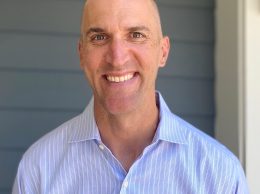
Joel Balbien
By Joel Balbien
Economists use game theory to model interactions among patients and doctors where there is strategic behavior by agents who understand that their actions affect the actions of others. It is assumed that each agent has a best response to the actions of all other players, and that this can lead to predictable outcome in the marketplace, often referred to as a Nash equilibrium. Some games can be used to model medical consultations where non-cooperative solutions can prevail.
Game theory also is used by economists to address market failures caused by highly concentrated health insurance, hospital or prescription drug markets, and externalities like pollution that can impact human health. In this context, a game consists of a set of utility- or profit-maximizing agents, a set of strategies for each agent and payoffs to each agent for every possible list of strategy choices by the other agents.
In addition, microeconomic theory can provide guidance to policymakers on the type of rules and regulations governing market behavior that are likely to promote beneficial competition and economic efficiency, improve patient outcomes and reduce the growing cost burden of the health care sector on the U.S. economy and its competitiveness.
So, what guidance can microeconomic and game theories provide about reforming the U.S. health care system? First, reforms should focus on shifting the entire therapeutic services supply chain from pay-for-service to pay-for-outcomes (PFO). Therapies resulting in bad outcomes would receive a zero price, which is analogous to consumers purchasing defective products. A PFO pricing policy would be focused on achieving cost-effective management, reversal or cures for chronic diseases like Type I and II diabetes and cardiovascular disease, which generate more than 85 percent of all health care expenditures, according to the Agency for Healthcare Research and Quality. Outcome spectrums for prescription drug therapy, biomedical devices and surgical procedures would be screened, categorized and legally defined in advance of Food and Drug Administration or other regulatory approval of therapies. The opioid epidemic would be brought under control because there would be no reimbursement of drug companies for bad outcomes, including long-term opioid addiction. Mandatory reporting of outcome frequencies across therapies and service providers globally would enhance transparency, help identify best practices and improve decision-making by all stakeholders and patients. Ultimately, PFO could restructure the health care industry into more of a software-as-a-service model, where early genetic screening, gene therapy and lifestyle coaching minimize the lifetime costs of sustaining a healthy population.
Secondly, reforms should reduce or eliminate price discrimination. Firms charging different prices to different customers for identical products or services is pandemic throughout the health care industry. Service providers could be required to charge only two prices — a near-zero price for both the indigent and bad outcomes, and one price it chooses for everyone else, whether insured or uninsured, young or old, foreign or domestic. No doubt, the resulting transparency, competitive pressures and arbitrage opportunities from wide adoption of a one-price rule in health care would drive prices closer to costs across the sector and stimulate innovation as firms and entrepreneurs sharpen their product focus and market-entry strategies.
Finally, successful health insurance industry reform requires minimizing asymmetric information between stakeholders, particularly with respect to patient compliance with prescribed therapies. By integrating learning algorithms, biometric authentication and noninvasive sensors such as fitness trackers, infrared-based monitors and smart pill dispensers, moral hazards and adverse selection issues can be addressed. As a result, a highly competitive national health insurance market can emerge with two pricing tiers available to all policyholders regardless of age or medical preconditions. A higher premium tier would be for free-spirited consumers not interested in compliance and associated monitoring, while a lower premium would be available for the majority of consumers willing to implement and verify compliance with a recommended dietary, exercise, and/or prescription regimen.
Applied well, microeconomic and game theory can provide guidelines for successful reform of the health care industry.
• Joel Balbien is an adjunct professor in the California Lutheran University School of Management.






 Print
Print Email
Email

















